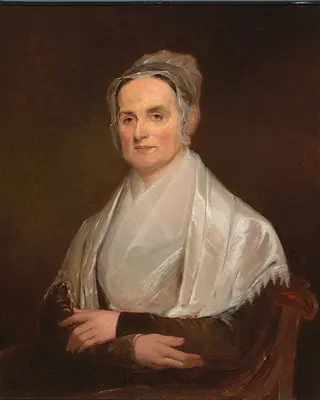
One-Half the People, One-Half the History: The National Women’s Hall of Fame and its Quest to Preserve History
Can you name 20 American historical figures that are women, excluding famous athletes, celebrities, and First Ladies? Most college students cannot, which isn’t surprising given that less than 5 percent of the content of history textbooks refers to women. On top of that, only 8 percent of sites listed on the National Register of Historic Places embody underrepresented communities, including women.
The National Women’s Hall of Fame in Seneca Falls, New York, aims to change that.
Nestled in the Finger Lakes region among the rolling farm hills of upstate New York, Seneca Falls is a quaint and quiet town. The unknowing traveler would be surprised to learn that over 150 years ago, this location witnessed one of the most decisive civil rights movements in our nation’s history.

photo by: National Portrait Gallery, Smithsonian Institution; gift of Mrs. Alan Valentine
Portrait of Lucretia Coffin Mott.

photo by: Library of Congress
Elizabeth Cady Stanton: she and Lucretia Mott, foremost activists of the day, helped organize the 1848 Women’s Rights Convention in Seneca Falls.
In the summer of 1848, hundreds of women’s rights proponents gathered at Wesleyan Methodist Chapel for what would become known as the First Women’s Rights Convention.
Participants included none other than the foremost activists of the day, including Elizabeth Cady Stanton, Lucretia Mott, and Frederick Douglass. In the end, 100 participants, both women and men, signed the Declaration of Sentiments and formally demanded gender equality.
Just a little over a century later, the National Women’s Hall of Fame was founded. Asked why the Hall decided to locate itself in Seneca Falls, Hall CEO Jill Tietjen simply says, “This is the place.”

photo by: Becker1999/Flickr/CC BY 2.0
In 1848, hundreds of women’s rights activists gathered in Seneca Falls, New York, in the Wesleyan Methodist Chapel.
The creators of this new Hall of Fame, pioneers themselves, called for the recognition of the myriad ways women influence the nation. Tietjen explains, “At this point in time, really, there was almost nothing in the U.S. that recognized women’s accomplishments. The Hall was founded with the belief that the contributions of American women deserve a permanent home.”
Today, just down the street from where the Convention occurred (and where the Women’s Rights National Historical Park, a National Park Service site, now exists), the Hall inducts 10-12 women biannually into the Hall of Fame. It is the oldest membership organization in the nation to recognize women’s accomplishments.'
Stay connected with us via email. Sign up today.
Women are inducted through a rigorous selection process. Nominees include women who significantly contributed to society in the areas of arts, athletics, business, and science, to name a few. There are currently 256 inductees, ranging from First Lady Abigail Adams to Senator Patsy Mink, from activist Rosa Parks to golfer Babe Zaharias.
The Hall does not just want to recognize great women, but aims to educate the public about their achievements and contributions, and, ultimately, correct the historical bias present in textbooks.
To better achieve its twin goals to honor and inspire, the Hall embarked on a campaign to elevate its visibility and educational capabilities.

photo by: Cryo Mariena/Flickr/CC BY-ND 2.0
The 1844 Seneca Knitting Mill is the site of the Women’s National Hall of Fame and includes exhibit and conference space. The new space is called the Center for Great Women.
To that end, the Hall purchased a bigger space—the 1844 Seneca Knitting Mill. The Mill, prominently located on a branch of the Erie Canal and once a producer of woolen socks, had fallen into disrepair since shuttering its doors in 1999.
Over its tenure, the Mill employed thousands of women and stood as an icon of various social movements. As ardent abolitionists, the owners used only wool, not cotton from the slave-holding South, during production. They also were among the 32 men who signed the Declaration of Sentiments at the 1848 Convention.
The Hall intends to rehabilitate this deeply significant site and perpetuate its legacy as a site of social change and equality.
Since purchasing the Mill in 2007, the Hall has already stabilized the main building and replaced the roof. There is, however, much more work to be done. Some of that work will be made easier with a grant through the National Trust's 2018 Partners in Preservation: Main Streets campaign, which is covering plaster work, cleaning, painting of original wooden stools, and baseboard repairs. If all goes well, the Hall will move to the mill in 2019.
“Women’s stories are not told,” Tietjen says, so “it is very, very important for organizations like the National Women’s Hall of Fame, the National Women’s History Museum, the National Women’s History Project, the State Halls of Fame, and the Women’s Rights National Historical Park to exist so that people can learn about and can understand women’s accomplishments and women’s history.”
By telling the stories of women who do not appear in history books, the Hall is tirelessly working to correct this historic oversight and lead the movement to ensure that women’s history is preserved for generations to come.
.webp)

